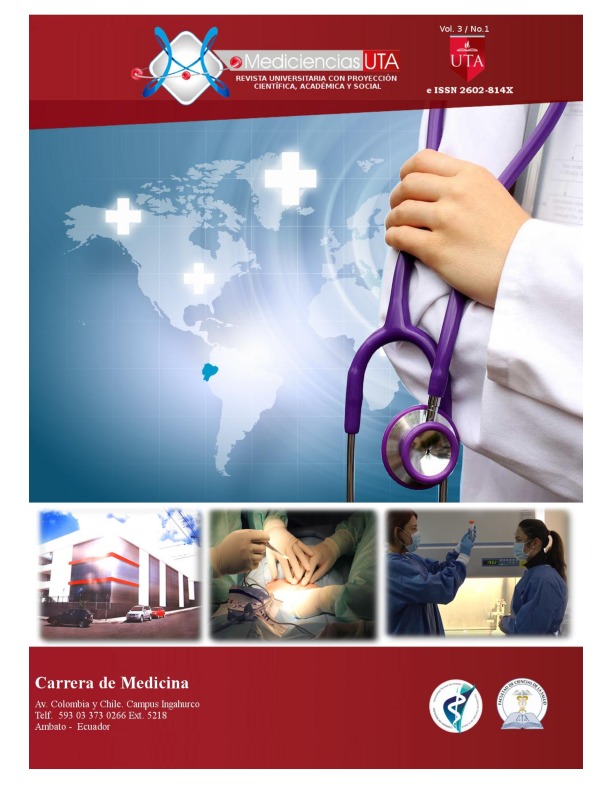Pre-diabetes in health servers of the Hospital General Puyo
Main Article Content
Abstract
Introduction: In recent decades with population growth, lifestyle changes and the presence of risk factors; Diseases such as type 2 diabetes mellitus (DM2) and cardiovascular events have increased in a parallel way. Both entities can be presented independently or not. DM2 is considered a public health problem given its high rising prevalence in the last 20 years. Pre-diabetes progresses to DM2 by 10% annually and increases the risk of microvascular injury in the same way as diabetes mellitus established, is also considered anindependent risk factor for cardiovascular events. It is estimated that 90% of people with pre-diabetes and 40% of people with diabetes are unaware of their clinical condition; Therefore, it could modify its natural history, through testsof timely detection of pre-diabetes and diabetes, that allow to prescribe a treatment directedto avoid disglycemias, maintaining the glucose levels as close as possible to the normal.
Objective: To estimate the frequency of pre-diabetes in the health workers of the Puyo General Hospital.
Material and methods: A prospective descriptive investigation was carried out. We worked with health servers of the General Hospital Puyo, including physicians, nurses and support staff (pharmacy auxiliaries, nursing assistants, physiotherapy staff), who should be linked to the institution through a Employment contract, for more than 1 year; The investigation was carried out during the period of the 1st. April-June 30th, 2018. Data on clinical and anthropometric characteristics were collected by means of the FINDRISC test. For the diagnosis of pre-diabetes, the American Diabetes Association (ADA), fasting glucose and the oral glucose tolerance test were used. Descriptive and inferential statistical methods were used.
Results: We worked with a population of study 238 health workers. We excluded 39 patients who did not meet the inclusion criteria, forming a total universe of 199 patients (N = 199), found a frequency of 9.5% of pre-diabetes, without statistically significant difference between age and sex, with a value p > 0.05.
Conclusions: Pre-diabetes is present in the medical staff of the General Hospital Puyo in a similar value to those reported internationally. The main predictors of risk for pre-diabetes identified were age, weight, BMI, abdominal perimeter, glucose altered on occasion, and family history.



